I’m writing from Kunming today. I actually arrived yesterday but it was late in the day and I only had enough time to visit one park before calling it quits and so I didn’t accumulate enough material for a blog. I also didn’t have enough time to go to the Stone Forest because it was way too far on the other side, and it was either between that or Dian lake, both are spectacular vistas but both command a serious amount of time. If I had one extra day it definitely would have been worth the visit but it’ll have to be for some other time.
I learned a really important lesson when it comes to building itineraries when travelling without a tour guide though – it’s extremely important to consider the logistics when it comes to travel time and the distance of every destination. You can find good and inexpensive hotels to stay at but you also have to consider the mode of transportation you’re using to get there – is the hotel close to the places you’re going to visit? How far is it from the airport or the train stations? Is it close to any other public transportation hubs? How are you going to mobilize from attraction to attraction using the least amount of time? A taxi isn’t always the answer, and in fact, Kunming had the worst traffic I’ve seen so far. After going to the first destination via taxi and being stuck in traffic for almost half an hour, the subway system was sort of a saving grace for me, as it was designed such that a station was pretty much right next to the two spots I was going to visit afterwards.
You also have to account for the amount of time you’re going to spend at each attraction to maximize the amount of coverage, and also for the amount of people you’re travelling with, as well as the amount of potential other tourists at each location. For example, many people would consider the Terra Cotta army a half-day affair, but if you can leave early in the day, are travelling with only a few people, and it was late November when there aren’t that many tourists? It could easily be done in two hours, which increases your efficiency. That said, this style of tourism won’t be as relaxing as what a vacation maybe ought to be, but when the limiting factor is time, it should definitely be a priority to maximize the amount you have.
With that in mind, I also learned that it’s difficult to plan for travel time without using Chinese apps (in China, funny right), as the routes that Google Maps (what I usually rely on in North America) proposes are often incorrect due to outdated information. Baidu maps is a lot more accurate in this regard but it is extremely slow or even blocked in certain areas of the West. I’m unsure if there are any 3rd party apps that can accomplish the same thing with the same degree of accuracy, but for future plans it would definitely be a lot more efficient to plan out entire routes beforehand and then adjust accordingly, instead of only hitting a destination and if time allows, to hit another one. It doesn’t have to be an extremely tight fit either, just allow spaces of time for potential delays due to traffic, weather, fatigue, or other events that may happen. Worst case scenario you drop an attraction, but if I was a bit more efficient in Xi’an I definitely could have explored more, similarly with Kunming.
All that aside, Kunming is for all intents and purposes, the cultural and actual capital of the province of Yunnan, in the South West region of China. It sits on the same longitude line as Florida and Texas so as you can imagine, it gets pretty hot here. Thankfully, the weather in November was a pleasant 20 degrees Celsius, coupled with somewhat cloudy skies meant two beautiful days for sightseeing.
As the train from Xi’an to Kunming would take about 36 hours, the only option was to fly. The tickets are fairly cheap, approximately $50 USD. Unfortunately by the time I arrived at Kunming and checked in at the hotel, it was already late afternoon, so I took a taxi to the closest destination, Haigeng park, which borders the Dian Lake.

Now if you can’t tell, Dian Lake simply wasn’t what it used to be. As with all human development, the environment around it suffers as a result, and even walking down the street it was clear that construction was happening everywhere. In fact, there’s construction right outside my hotel (thankfully they stop once night falls so there’s no disturbance). Waste was pumped into the lake untreated up until 1990 so you can imagine the damage it caused to the ecosystem.
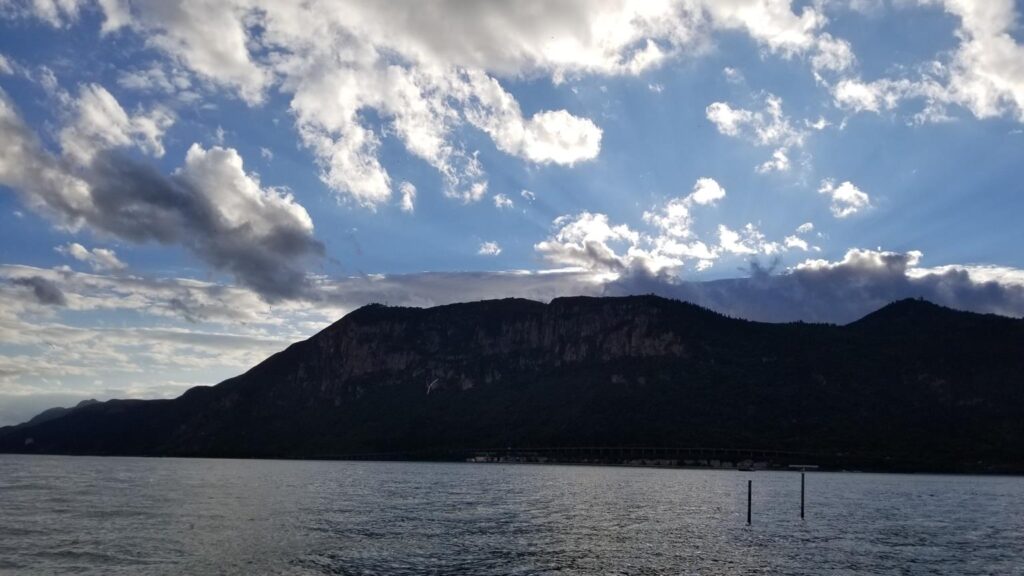
There have been efforts to restore the lake but they have been largely unsuccessful, and today the water is undrinkable or even usable for agriculture. It is a veritable shame because on the surface it was a beautiful sight, coupled with the mountains and much bluer sky compared to the previous places I visited in China.
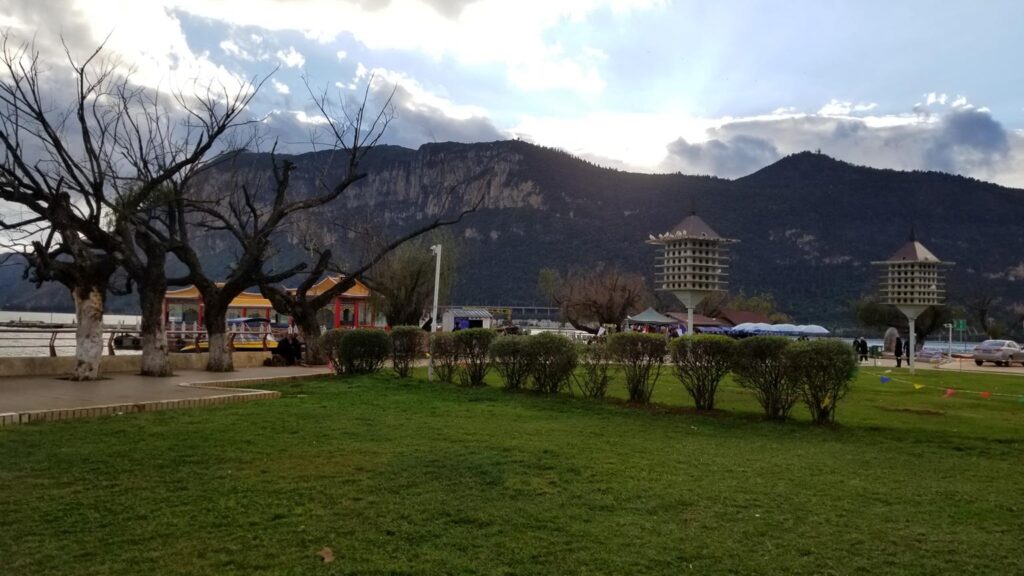
The park was free to enter and leave, it was mostly a place for people to take a stroll, but for some strange reason there were lots of people there fishing with some really thick rods right next to signs that said no fishing. With a lake that has an estimated 55% of its fishing population dead from the pollution, I wasn’t sure why they were there exactly – I didn’t even see any of them catch anything for the few hours I spent walking along the coast line. I wasn’t about to go up to them and confront them about the no fishing thing so I just went on my merry way.
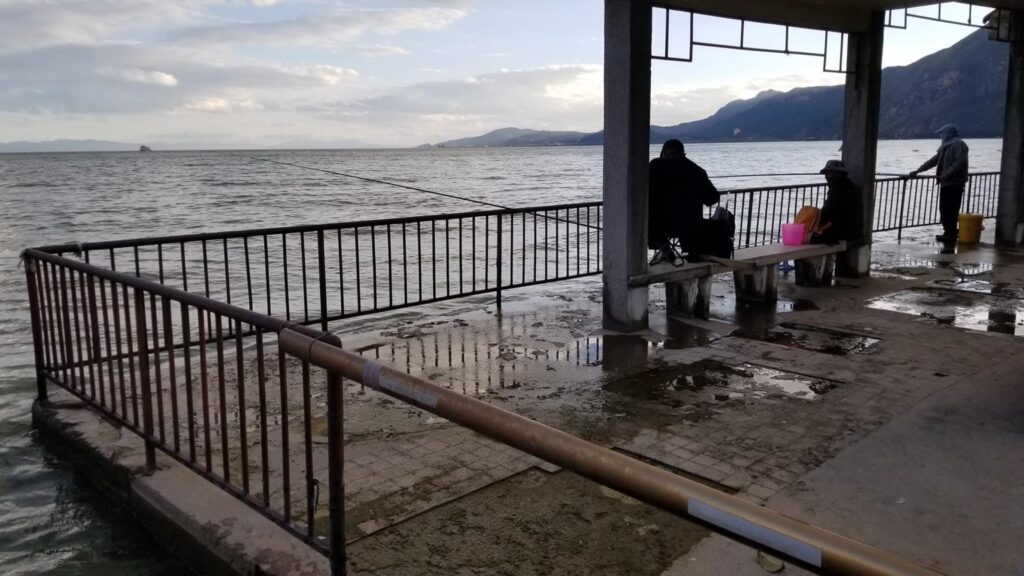
The rest of the people here were just enjoying the lake breeze, and there were vendors selling bread that you could feed to the local birds. There were also biking paths and flower gardens along the way.
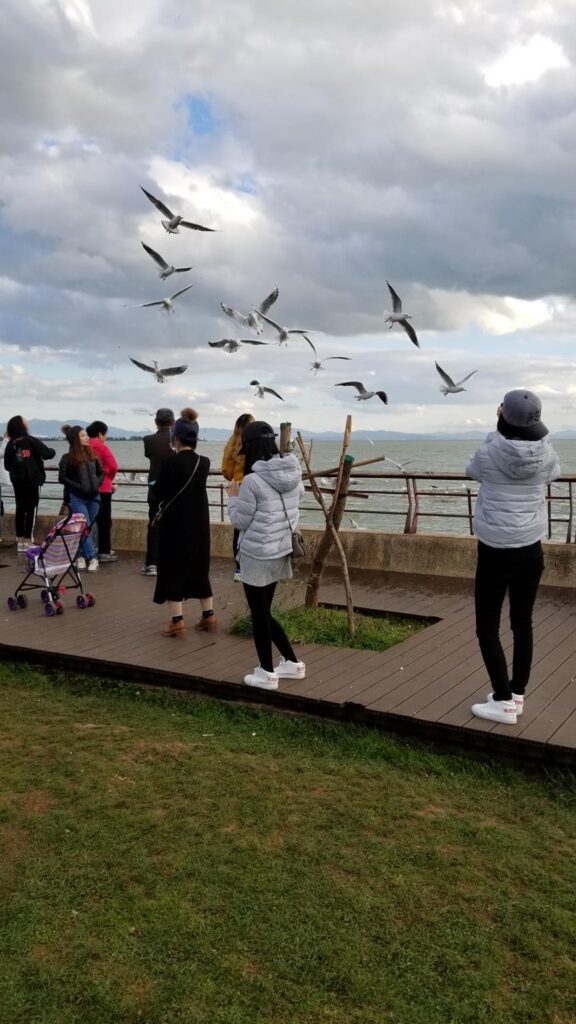
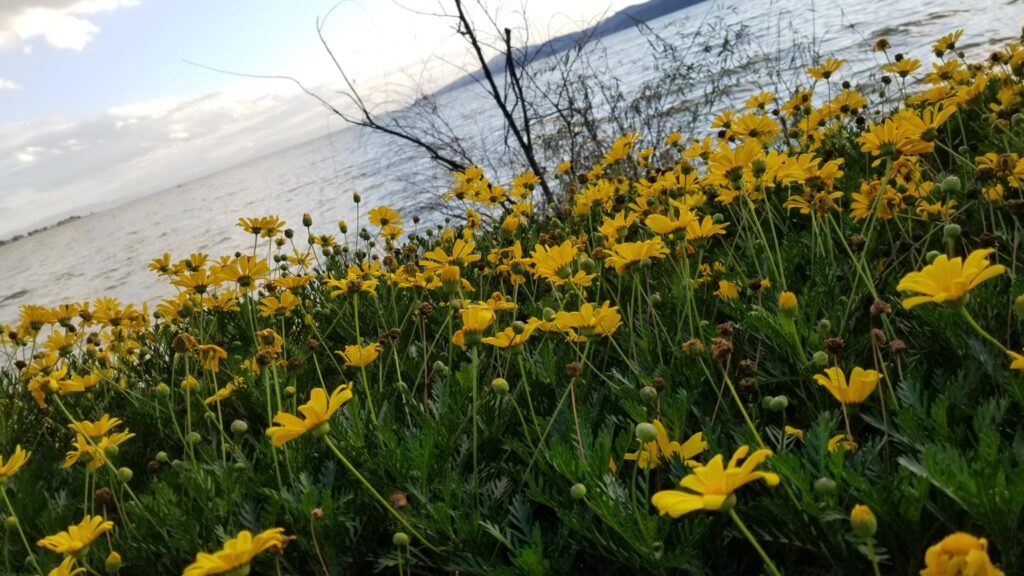
The next day I headed for the Western Hills and more specifically, Dragon Gate. The entire place was huge and would probably take an entire day to explore it all. As mentioned previously, I took the subway and the station exit was right next to the ticket vendor. A 88 CNY ticket gave you access to the Dragon Gate and its surrounding scenic area, a shuttle bus to and back the entrance to said area, as well as a cable car ride up the mountain and a battery car ride back, should you choose to do so. Of course you could opt for just the entrance fee and hike the entire 15 kilometers or so, and if I had better shoes on I probably would have done so but I did chicken out a bit and took the easy way out and bused up the mountain.
Personally, I would highly recommend to not hike the whole way and skip the cable car, it was definitely the highlight of the day. At first glance it looks dangerous but you’re actually never realistically that far off the ground (don’t drop anything though you won’t be able to get it back most likely). However, if you turn around or look to the side, you’ll be greeted with quite the spectacular view of the city.
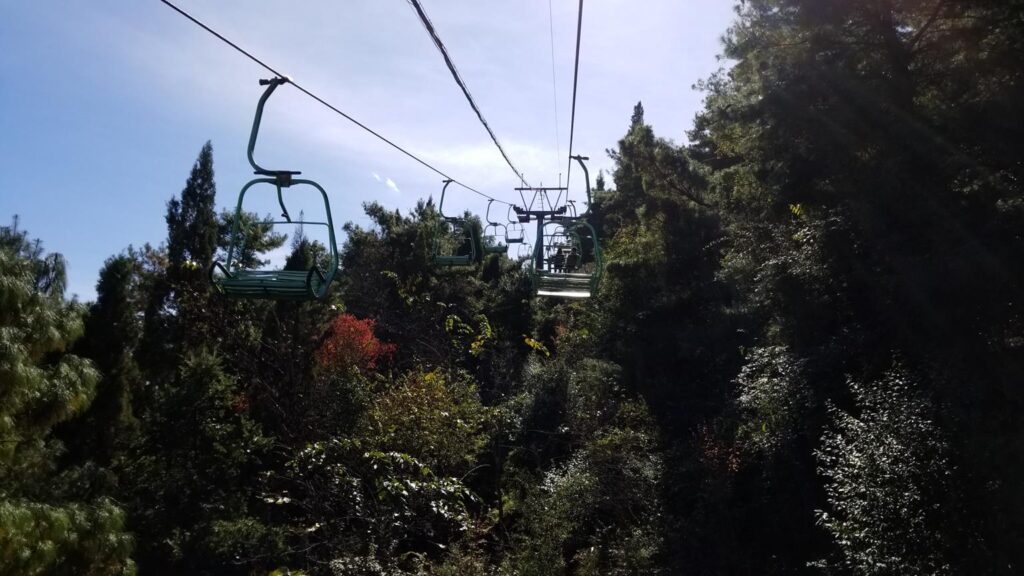
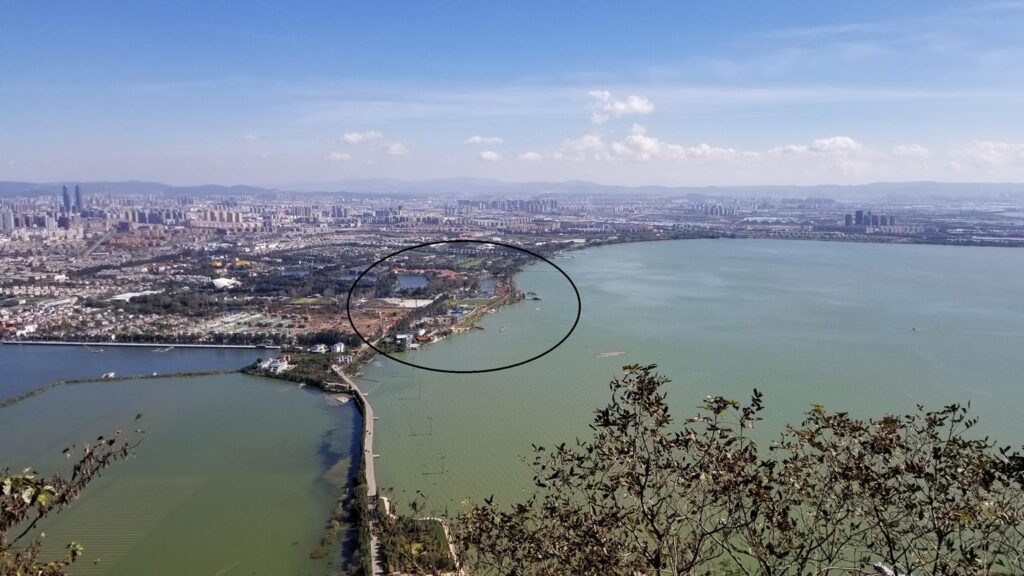
After you get off the cable car, you have a few choices. You can go to the scenic area, take a few pictures, and then take the cable car back down if you don’t want to hike at all. Alternatively, you simply hike back down the mountain and visit the temples where you can make offerings and other various nooks and crannies along the way (what I did). Granted, if you hiked up the entire way (very commendable), you could definitely take the cable car back down if the fatigue got to you. If you had the stamina of superman, hiking the entire way back down would definitely demonstrate your physical ability.

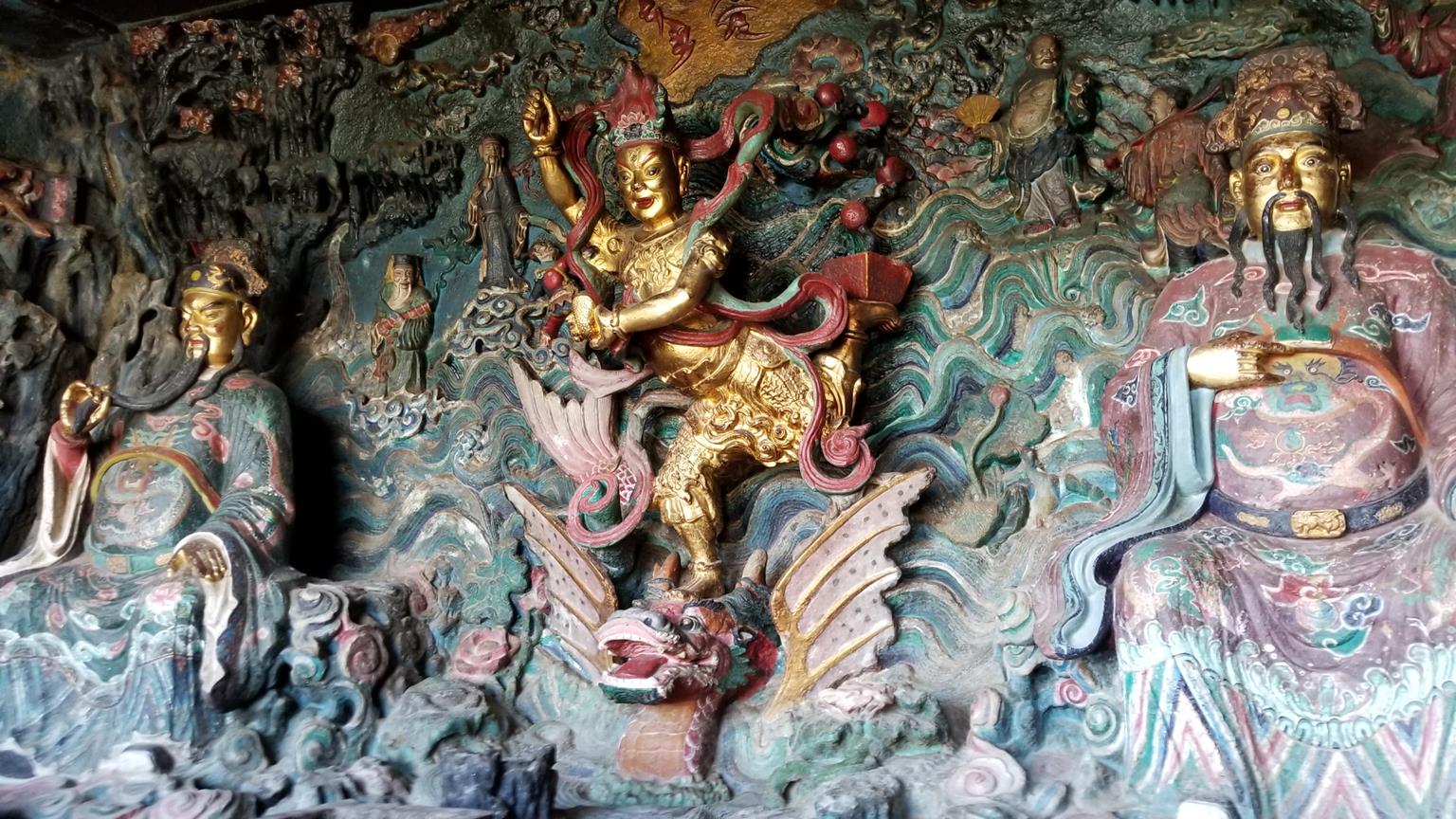
The Dragon Gate, as expected, was packed with tourists so I didn’t really have a good opportunity to take a nice looking photo. It isn’t really a vista in of itself, it’s just built on a side of a cliff that offers one of the widest viewing angles of the city, which was shown in the panorama above.
After you descend, there’s basically a marketplace where you can buy food, fruit, and locally produced statuettes and souvenirs. I just bought a classic bowl of noodles. I thought I had a picture of the rice thread (Mi Xian) dish that’s a specialty to this province I also got but it mysteriously got deleted, which is unfortunate. I’ll definitely get more opportunities in Lijiang, where I’m heading to tomorrow.

The next destination of the day was Cuihu, or Green Lake. It was a park, also with free admission like the park yesterday. This one was way more packed with tourists, the locals, and these birds. Fun fact – this used to be part of Dian Lake but decreasing water levels eventually resulted in it becoming its own independent body of water. Another fun fact, when the birds here get full from all the people feeding them, they actually fly back to Dian Lake to relax.
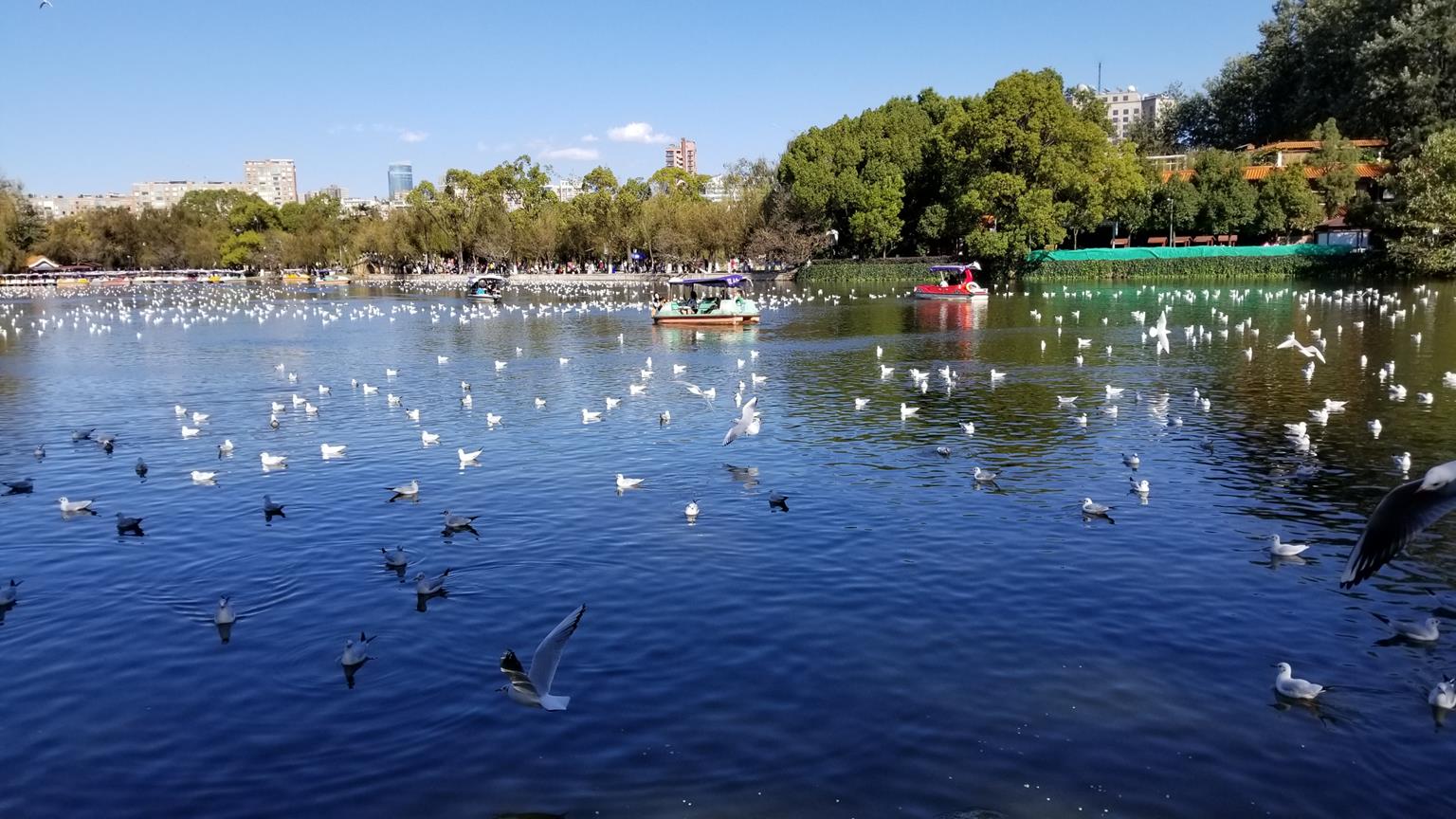
The park was actually divided in 5 sections and if you really wanted to be thorough it would probably take you another whole day to navigate the entire place with the amount of people that were here. There were many people dancing and singing, some in traditional clothing while others were just grooving in their sportswear. It was equal parts relaxing as it was loud, depending on your proximity to the closest loudspeaker.
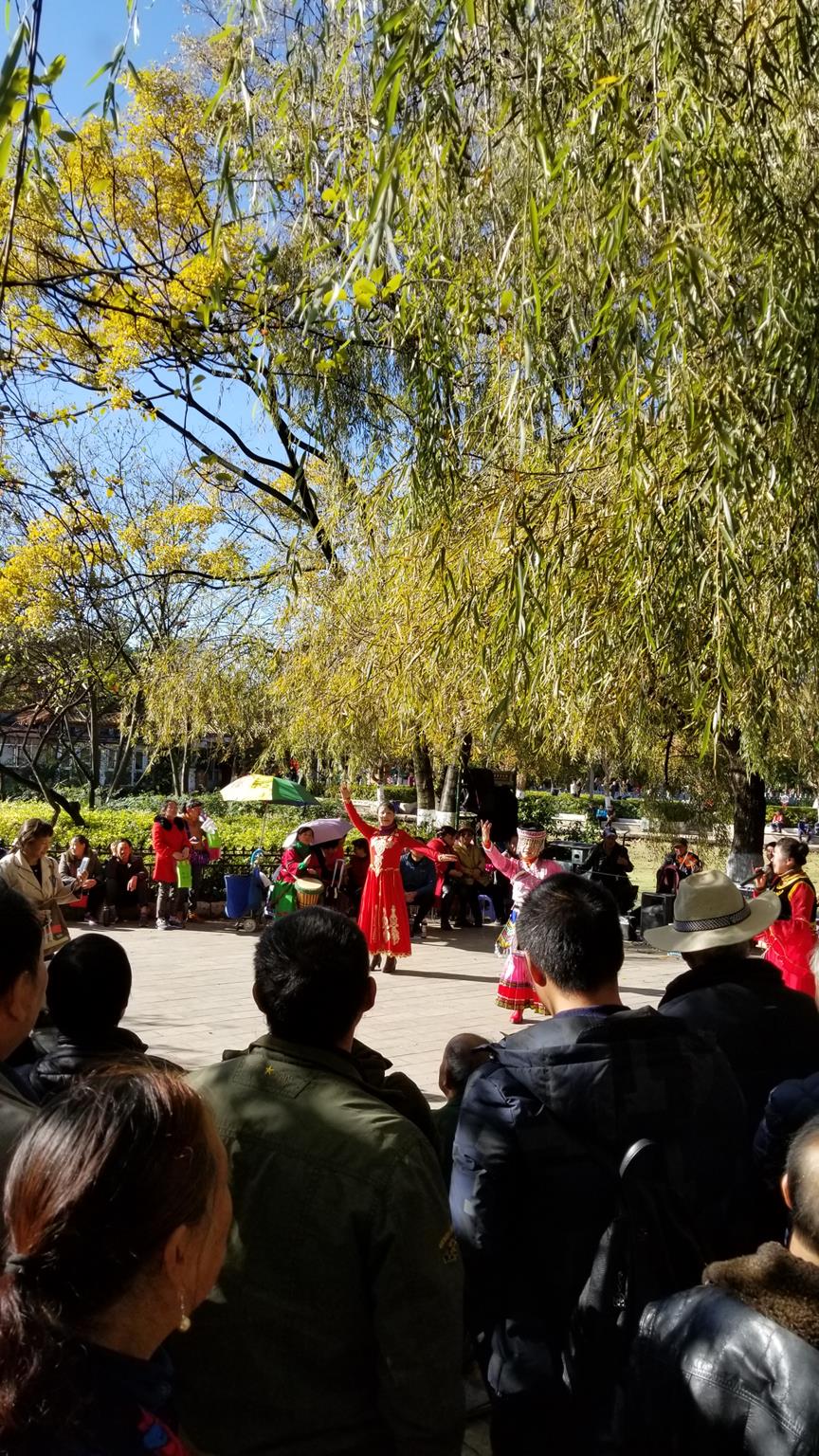
The park was also host to many types of plants that it helps cultivate. There were many species of bamboo, as well as a bonsai garden.
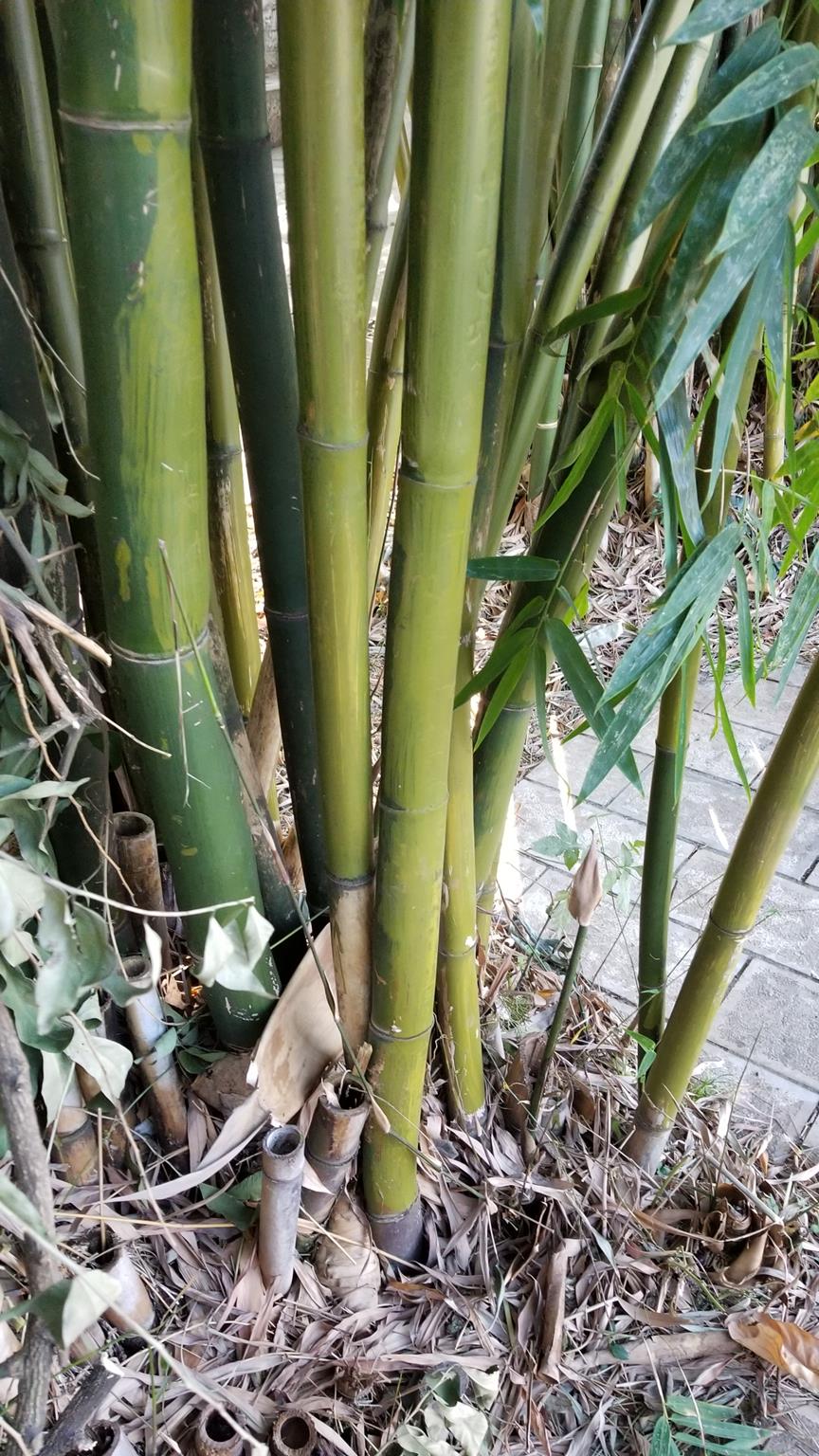
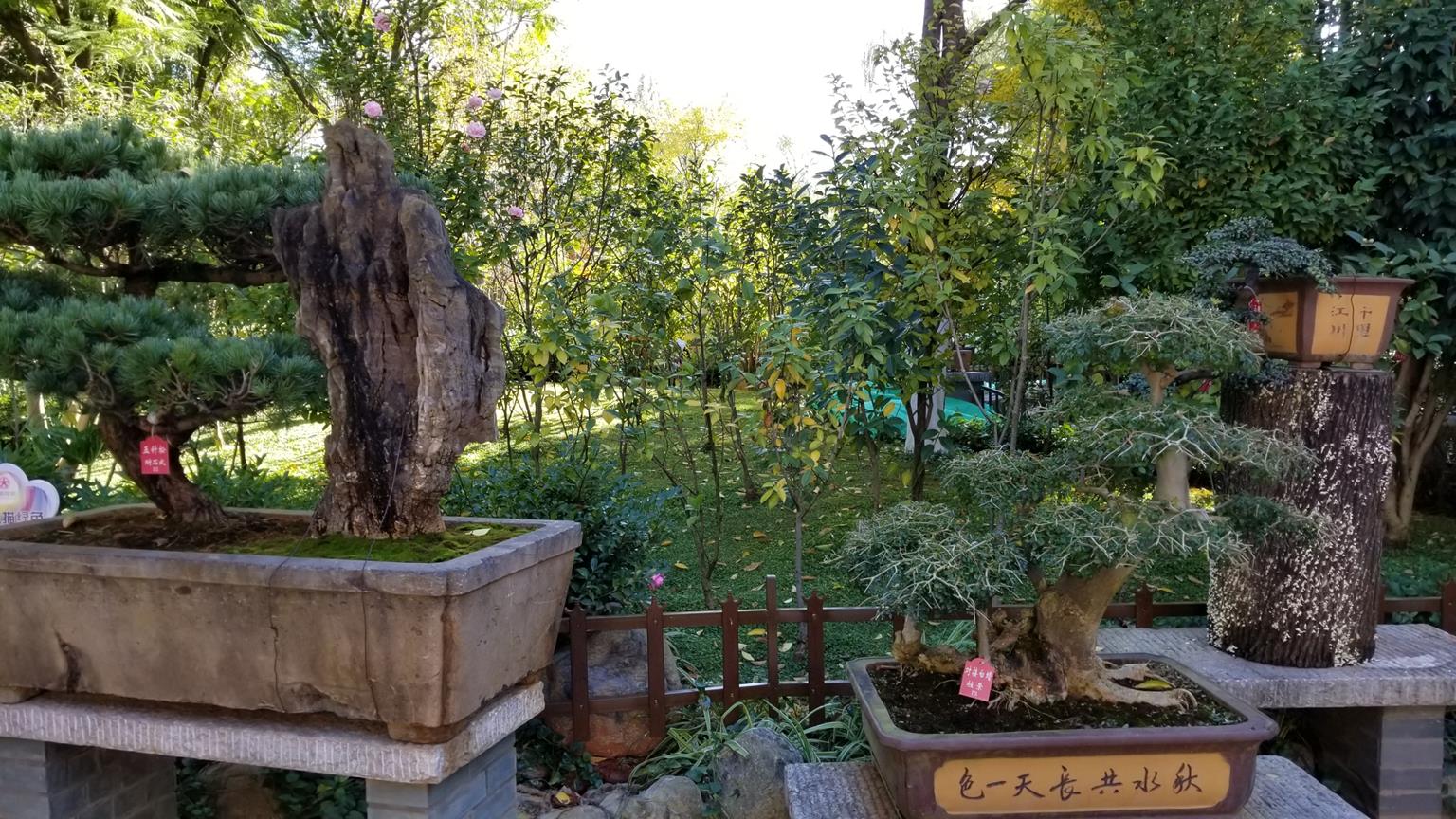
Again the water seemed pretty polluted so there was likely no fish in the area anymore. I saw some workers cleaning up the lake but it would most likely be decades before the environmental damage could be reversed – if it was even possible.
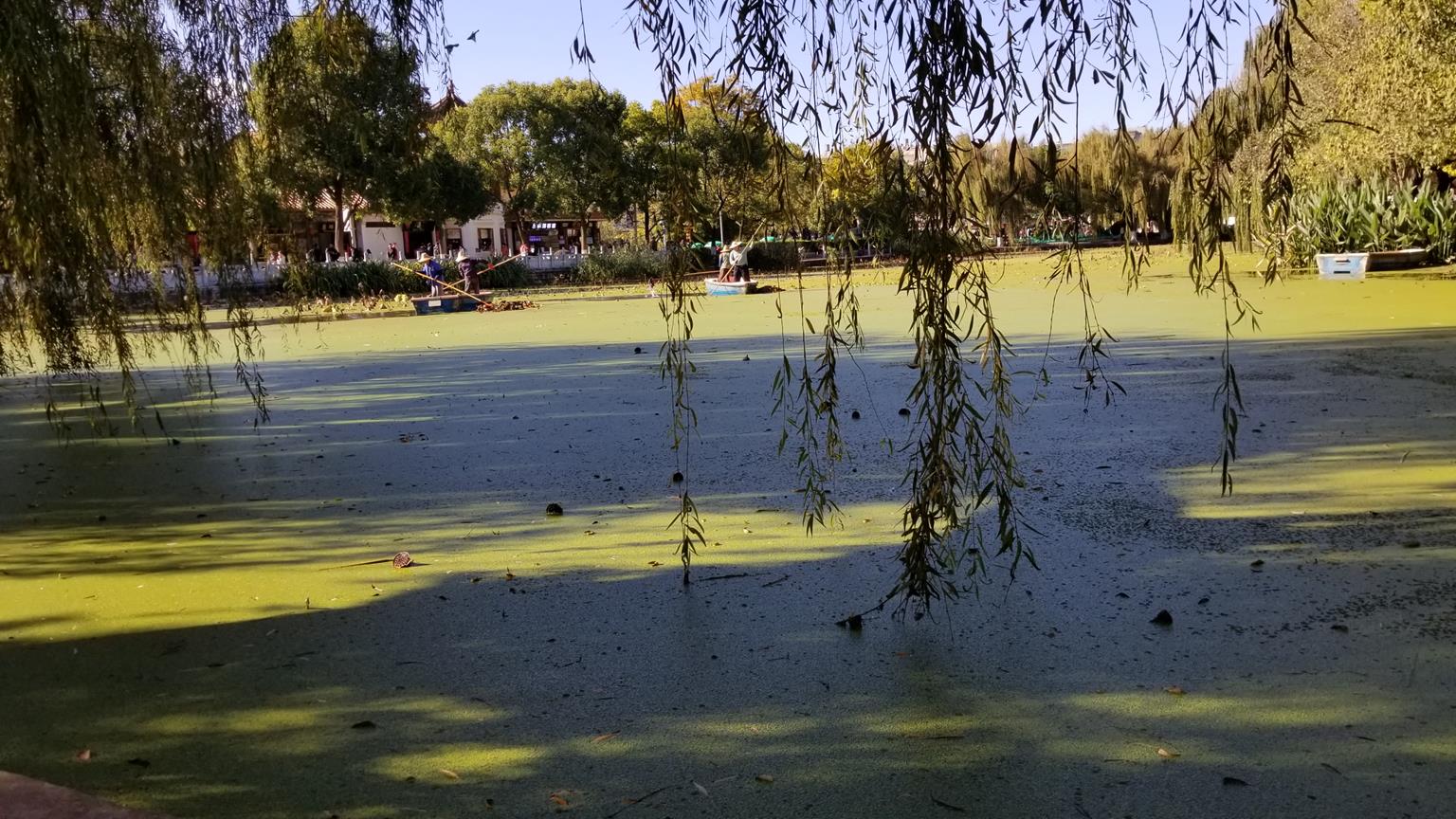
Tomorrow I fly to Lijiang, but I most likely won’t be able to gather enough content for an entire blog so see you in 2 days!